International Journal of Agricultural Science and Food Technology
Importance of fenugreek (Trigonella foenum-graecum L) to smallholder farmers in the case of Eastern and Southern Ethiopia
Rameto Roba1* and Tariku Simion2
2Arba Minch Agricultural Research Center, Arba Minch, Ethiopia
Cite this as
Roba R, Simion T (2022) Importance of fenugreek (Trigonella foenum-graecum L) to smallholder farmers in the case of Eastern and Southern Ethiopia. Int J Agric Sc Food Technol 8(2): 139-146. DOI: 10.17352/2455-815X.000155Copyright License
© 2022 Roba R, et al. This is an open-access article distributed under the terms of the Creative Commons Attribution License, which permits unrestricted use, distribution, and reproduction in any medium, provided the original author and source are credited.Information on the diversity of landraces, cultivation practices, and feeding habits is necessary to improve the crops through selection and/or hybridization. This study was conducted to generate information to document cropping practices, values, and socio-cultural aspects of fenugreek. A study was conducted in five districts of Oromia and one yem special districts at Southern Nations, Nationalities, and Peoples’ Regional States, and data were collected using structured and semi-structured interviews from 144 general and 24 key informants. Assessment of data was conducted through interviews with informants regarding cropping systems of the specific landraces, plant nomenclature of traditional landraces, distinctive criteria of each landrace, and use of fenugreek. R software version 4.1.2 and MS Excel 2010 were used to analyze qualitative data, quantify, sort, determine proportions and draw figures, percentages, means, and tables. The result indicated that Hulbata Guracha and Hulbata Dima in Eastern Hararghe and Abesha abish and Orome abish in Yem Special district were reported as popular farmers’ cultivars. The farmers named the cultivars mainly based on seed color, seed source, and taste. Sole cropping of fenugreek was more common in Yem special district (65.3%), whereas intercropping with sorghum and Catha edulis (khat) was common in East Hararghe (27.3%) and crop rotation was practiced in both East Hararghe (97.2%) and Yem especial district (88.8%). The farmers in the study area use fenugreek mainly as food in East Hararghe (100%) while in Yem special district used mainly as a spice (100%). This is due to socio-cultural and knowledge differences on the importance of fenugreek in the study area that influence feeding habits, cultivation practice, and uses.
Introduction
Fenugreek (Trigonella foenum-graecum L.) is an annual, self-pollinating and diploid (2n=16) legume species [1]. It originated in countries bordering the eastern shores of the Mediterranean Sea and is now widely cultivated in China, Egypt, Ethiopia, Morocco, Ukraine, Greece, and Turkey [2]. Ethiopia is an original homeland of a fenugreek subspecies known as the Mediterranean ecotype, which has a distribution extending from Eritrea to Somalia [3]. Fenugreek is a multipurpose crop that is utilized as food, feed, spices, and medicinal plant, and the oil is used in perfumery in France [4]. It enriches soil through symbiosis with microorganisms, which fix atmospheric nitrogen [5,6]. In Ethiopia, the crop is produced either as a spice, food, or for other special purposes, such as for nursing mothers and infants as a breakfast beverage also, used in crop rotation for purpose of soil fertility, income generation, a flavoring for traditional bread, and maintains the soft texture of “tef-Injera” [7]. Almost all farmers in Hararghe use fenugreek in the major food called ‘Lafiso’ which is made from either maize or sorghum “Injera” and served as baked in a mixture of fenugreek flour boiled either with meat or alone. In the Harari region, people also use fenugreek to prepare their favorite dish, known as ‘Hulbat Meraq’; they use fenugreek cooked with meat and mixed with Injera [8]. Ethiopia is one of the countries in the world where fenugreek is most widely cultivated [9,10] The production and distribution of fenugreek are similar to those of other cool-season food legumes such as faba bean, field pea, lentil, chickpea, and grass pea [11]. During the 2014 cropping season, fenugreek covers 20,524.4 hectares in the country with an average yield of 1.2tha1. Fenugreek ranks 9th among highland pulses production in Ethiopia but it ranks 7th and 4th in East Hararghe and Yem Special districts in Southern Nation Nationalities and Peoples, respectively. In East Hararghe, fenugreek occupied 10.3% of the cultivated land being used for pulse production which covers 1440.1 hectares of land with an average yield of 1.375 tons per hectare, In Yem Special district fenugreek is expected to cover 0.1% of the land as equal to the average land allocated for fenugreek in Southern Nation Nationalities and Peoples [12]. However, this important crop is neglected and underutilized which will unintentionally need the risk of losing some important landraces and documented information used by farmers in different that have been maintained and used by farmers over hundreds or thousands of years [13]. Limited information is available about fenugreek landraces and production systems in Ethiopia [14]. On-farm diversity information of fenugreek including the criteria of farmers used to classify their landraces, importance, use and the cropping systems differences or similarities in different regions of the country critical issue for crop improvement and share information about the importance of the crop. Therefore, it was necessary to generate information about the production system and importance of fenugreek in the Southern Nation, Nationalities, and Peoples Region (Yem special district) and the Eastern Hararghe Zone of Oromiya Regional State due to the high production of the crop in these areas. This is because, the cropping systems, the utilization of the crop by farming households, the economic importance, and other related information are not well documented in Ethiopia. Assessment of the production system and the importance of the crop is equally important as the evaluation of genetic variability to generate information that can be utilized by researchers to improve the productivity of the crop. Therefore, the current study was undertaken with the following objectives to describe and document cropping practices, uses, and socio-cultural aspects of fenugreek in the major growing areas of eastern and southern Ethiopia.
Methodology
Description of study area
The study was conducted in two major fenugreek growing areas of Eastern Hararghe Zone and Southern Nation, Nationalities, and Peoples Region (Yem special district). East Hararghe Zone is located between 7o 32“ N and 9o 44“ N latitude, and 41o12“ E and 42o53“ E longitude, and has an altitude ranging from 500 to 3400 m.a.s.l [15]. The study area in East Hararghe included four districts, namely Girawa, Kersa, Meta, and Kurfa Chele. Yem Special district is both its administrative zone and a district. In total, five districts were selected for the survey (Figure 1).
Materials used
Materials used for survey research included a Smartphone (Motorola 2nd generation) installed with ODK (Open Data Kit) software and a camera to take pictures of plants and seeds, a GPS to record longitude and latitude, and a power bank for charging the phone during fieldwork.
Sampling design
Study site selection: The two study areas were selected purposively to include areas likely to have enough information because they have high production of fenugreek. The Yem Special district in Southern Nations Nationalities Peoples and East Hararghe Zone in Oromiya Regional State were selected based on agroecological and socio-cultural differences and high production of fenugreek during the 2014/15 cropping season [12]. Each area was stratified by agroecological zone [16], so each stratum has a unique combination of the agroecological zone with an ethnicity (cultural differences). Two different agro-ecologies (Warm sub-humid lowlands classified as (SH2) and Tepid sub-humid mid-highlands classified as (SH3) and two ethnic groups (Oromo and Yem), so there were a total of four strata included in the study. Within each of the four strata, three kebeles (a total of 12) were randomly selected, to obtain an unbiased estimate of information for distinguishing criteria of one landrace from others together with the associated use values and the traditional cropping systems of fenugreek.
Informant selection
After the selection of the study kebeles, a total of 168 informants (144 general informants and 24 key informants) were selected. The selection was purposive for key informants and random for general informants. To get detailed and valuable information about fenugreek, two key informants from each of the 12 kebeles, a total of 24 key informants, were interviewed using a semi-structured interview guide.
First, all households within the kebele were stratified into two relative wealth categories; namely high-income and low-income groups from groups six low-income and six high-income households were randomly selected in Kebele similarly within each income category, 3 women and 3 men were selected for the survey. Lastly from each kebele, 12 households were selected for a structured survey of general informants. The detail of the sampling procedure is indicated in Table 1.
Data collection
Assessment of variations and cropping systems of fenugreek: Data on crop uses, local name, and cropping system were collected from October 2016 to February 2017 from primary sources using a structured interview by ODK (Open Data Kit installed on a smartphone), semi-structured interviews, and field observation.
Farmers’ field observation and key and general informant interviews were done according to standard procedures [17,18]. Framer’s field observation was done to get the necessary information on the cropping system and morphological structures of the landraces of fenugreek.
The interviews with informants provided detailed information regarding cropping systems of the specific landraces, plant nomenclature of traditional landraces, distinctive criteria of each landrace, and use of fenugreek. Care was taken to determine the consistency in farmers’ naming and describing fenugreek landraces by comparing information from farmer households and different social groups. The names of landraces were recorded at the same time as the collection of seed, in collaboration with the informant farmer for identification of the landrace in the field of farmers.
Data analysis
Descriptive: The researcher observed data at harvest on the botanical description of landraces by farmers was analyzed using qualitative approaches as recommended by Martin [13] and Cotton [19] also R Software and MS Excel 2010 were used to analyze quantify, sort, draw figures, percentage, means, and tables.
Result and desiccations
Fenugreek was used for various purposes in East Hararghe and Yem special district as indicated in Figure 2. The result reflects fenugreek used as food, spice, medicine, bee forage, and fodder in all study areas of Yem special district and Eastern Hararghe but there was use difference in the area to area as food more commonly used in East Hararghe 100% and as spice more common in Yem 100% than East Hararghe this may be due to socio-cultural difference in the study area.
Fenugreek was one of the important crops that add value for low-income farmers in all study areas but the different market prices from place to place Figure 3 reviled that the market price of Hulbata Guracha was more expensive than Hulbata Dimma in both East Harare and Yem special district this maybe Hulbata Guracha was more important than Hulbata Dima in nutritional content Tables 2,3.
A cropping system refers to the combination of crops grown in a given area within a year similarly in the present study area combinations of cropping systems are practiced. Intercropping is one of the intensive cropping systems which ensure sustainable utilization of limited land resources [20,21]. Figure 4 reveals that fenugreek is grown as a sole crop and as an intercrop with cereals however cropping systems differ from place to place in the study area intercropping was more common in East Hararghe 65% but sole cropping was common in Yem special district 72%.
Crop rotation is characterized by different crops being alternatively grown on the same land in a specific order to have more effective control of weeds, diseases, and better soil fertility [22]. The results of this study Figure 5 revealed crop rotation 97% and 88% was practiced by the majority of farmers. In most of the studies, areas rotate fenugreek with other crops and practiced use of rotation in 97% and 88% of East Hararghe and Yem special districts respectively but few farmers do not regularly rotate fenugreek with other crops.
Gender roles on production of the fenugreek in study area
Generally, in the current study, fenugreek production is done both by females and males in the study areas (Figure 6) however, the agronomic activities that are mostly done by men include plowing and hoeing because these need more energy than other activities whereas, Sowing, weeding, fertilizer application, harvesting, threshing, storage, and fodder collection are done by both males and females across the study area. Women are exclusively involved in food preparation for home consumption; where marketing and seed selection are also done mainly by females in all study areas.
Desiccation
The farmers in the present study areas use fenugreek for various purposes such as medicine, food, fodder, spice, and bee forage (Figure 2). Many scholars have reported that fenugreek has many uses. Its seed is used for flavoring foods [4] and its stem and leaves are used as forage [23]. In addition, fenugreek seed is used as medicine [24,25]; the seed extracts and seed powder reduce skin irritation, skin healing, and pain. Wani and Kumar [26] reported that the stems and leaves of fenugreek are used as vegetables and the seeds are used as flavoring agents for various dishes and eaten raw as newly grown leaves and used medicinally. Generally, the farmers in both agro-ecologies of East Hararghe Zone and Yem Special district who grow fenugreek use it for various purposes (Figure 2). It looks like everyone in East Hararghe Zone uses fenugreek as food and medicine, but not everyone in Yem. Supportive information was recorded from key informants; some farmers in Yem grow fenugreek primarily as a cash crop and spice. In both areas, fenugreek seed is used externally to heal broken bones and to treat skin infections. Fenugreek is also used internally to increase milk supply for babies and to treat coughs and respiratory problems. This description of the values of fenugreek agrees with previous studies by Wani and Kumar [26], and Meghwal and Goswami [25] who reported that the seed extracts and seed powder of fenugreek reduce skin irritation and thereby heal the skin.
Similarly, Figure 2 reviles that, all respondents use fenugreek as food (100%) in East Hararghe, but in Yem, only 70.8%. However, in Yem, all general informants said that they use fenugreek as a spice (100%), but in East Hararghe less than 63.9%, of respondents said that they use fenugreek as a spice Figure 2. According to key informants in East Hararghe fenugreek seed is used to prepare “wot”. called “Lafiso”. Similarly, they prepare a soup (shoriba) and drink it for various purposes. In Yem, farmers use fenugreek seed in the form of powder and mix it with different types of food and milk. Fenugreek seed powder is used as a spice to make food more flavorful rather than as a food by itself. This difference in the use of fenugreek might be due to differences in feeding habits of the different ethnic groups or socio-cultural contexts. The result of this study agrees with that of Singh [27] and Yadugiri (2010) who reported that farmers at either individual or community levels use crop landraces to meet their various medicinal, nutritional, and cultural needs. Beleiuma and Singh [28] also reported the use of landraces of fenugreek for different purposes like medicine, food, and spice in the Oromia Region.
According to Seran and Brintha [29], cropping systems tend to vary from location to location. Farmers in different parts of the world intercrop different crops according to their preferences based on socio and biological needs [30]. The present study indicates that cropping systems for fenugreek are different in East Hararghe and Yem. Intercropping of fenugreek with other crops was more often practiced in East Hararghe (65%) than in Yem (27%). Sole cropping is predominantly practiced (72%) in the Yem district rather than intercropping. This may be due to a shortage of arable land in East Hararghe. In East Hararghe Zone, fenugreek is usually intercropped with ”khat”(38%), sorghum (36%), and maize (6%). In Yem Special district, fenugreek is intercropped with maize (20%), sorghum (8%), and cassava (6%). The result revealed that the crops grown as a major food or source of income differ from location to location [29], and fenugreek is usually intercropped with major crops (Jemal, 1998). In East Hararghe Zone, sorghum and Khat are the major crops, but in Yem Special district maize is the major crop, and fenugreek is mostly intercropped with maize.
In agreement with this result, other studies have found that intercropping is a profitable approach, especially for the small landholders. Intercropping of cereals with legumes proved to be more productive than that of sole cropping [31] who reported that sorghum and maize are major food crops often grown in association with pulse crops in the East Hararghe Zone.
The high percentage of farmers using crop rotation indicates that farmers are aware of the benefits of fenugreek as a rotation crop. Crop rotation has been used to increase yield and to prevent harmful changes to the soil environment that limit productivity in the long term [32]. Different types of crops are sown after fenugreek within the crop rotation as indicated in Figure 5. The majority of farmers in East Hararghe and Yem rotate fenugreek with cereals such as maize (56% and 88%, respectively), sorghum (55%, and 79% respectively), and finger millet (23% in Yem only). Few farmers rotate fenugreek with root crops, such as potatoes (13% and 11%, respectively). The reason that fewer farmers rotate fenugreek with root crops than cereals may be due to the greater benefits of high soil fertility of legumes for cereal production. According to key informants, after the harvest of fenugreek, sorghum and maize are planted to take advantage of higher soil fertility and to reduce diseases and weeds. This result agrees with Sadeghzadeh, et al. (2009), who reported that fenugreek can be a very useful legume crop for incorporation into the short-term rotation and for fixation of nitrogen to improve soil fertility.
As shown in Figure 6, fenugreek production is done by females and males however; some agronomic activities that are mostly done by men include plowing and hoeing because these need more energy than other activities. A small number of females participate in plowing and hoeing in East Hararghe but not in Yem special district, which may be due to socio-cultural variation. Sowing, weeding, fertilizer application, harvesting, threshing, storage, and fodder collection are done by both males and females across the study area. Women are exclusively involved in food preparation for home consumption; where marketing and seed selection are also done mainly by females in both study areas. The current study agrees with that of Sintayehu [33] who reported that harvesting and storing are the tasks for women and men. Ogato, et al. [34], reported that females and males equally participate in weeding, storing, fertilizer application, harvesting, and threshing in three districts of Ambo in Ethiopia [35,36].
Conclusion
The results from the study indicated that farmers in the study area classify their landraces based on morphological traits such as seed color, seed source, and taste. The landraces identified based on farmer’s classification criteria are Hulbata gurach and Hulbata Dima from Eastern Hararghe Zone and Abesha abish and Orome abish from Yem Special district. Farmers in both agro-ecologies of Eastern Hararghe Zone and Yem Special district grow fenugreek for various purposes, including food, spice, medicine, fodder, and bee forage. Almost all farmers in East Hararghe use fenugreek as food and medicine, but not as many in Yem apparently due to socio-cultural differences.
Cropping for fenugreek varies from location to location. Sole cropping was more common in Yem, whereas intercropping with sorghum and Khat was common in East Hararghe. In addition, crop rotation is practiced by the majority of farmers in both East Hararghe and Yem, which indicates that farmers are aware of the benefits of fenugreek to improve soil fertility. The current study indicates there is variation in landraces that exist on hand of farmers’ morphology, color, uses,conclusi and name that was a base for improvement of fenugreek crop.
Recommendation
The study was conducted by field observation and interview of informants it is recommended that the landraces information obtained during the study should be tested in experimental fields for improvement of fenugreek productivity.
- Frayer JK, Chromosome atlas of flowering plant. Georg Allen and Urwin London1930; 519.
- Petropoulos GA, Fenugreek,The genus Trigonella, Taylor and Francis, London and New York 2002; 255.
- Sinskaya EN, Flora of cultivated plants of the USSR, Part XIII perennial leguminous plants, Part I medicinal, sweet-clover, fenugreek, Israel Program for Scientific publications, Leningrad 1950.
- Srinivasan K, Fenugreek (Trigonella foenum-graecum), a review of health beneficial physiological effects, Food Review International 2006; 2: 203-224.
- Sadeghzadeh-Ahari D, Kashi AK, Hassandokht MR, Amri A and Alizadeh Kh, Assessment of drought tolerance in Iranian fenugreek landraces, Journal of Food, Agriculture and Environment, 2009; 7(3 and 4): 414-419.
- Bromfeild S, Butler G and Barran LR, Temporal effect on the composition of a population of Sinorrhizobium meliloti associated with Medicago sativa and Medicago alba, Canadian Journal of Microbiology, 2001; 47: 567-573.
- Engles JM, Hauwkes JG and Melaku Worede, Plant Genetic Resource of Ethiopia, Cambridge University Press Cambridge, New York Port Chester, Melbourne Sydney1991.
- Jemal Abdulahi, Determination of spacing of fenugreek (Trigonella foenum-graecum L) and Effect of intercropping Fenugreek with Sorghum [Sorghum bicolor (L.) Moench] on yield and Soil Nitrogen. MscThesis, Alemaya University, Ethiopia 1998.
- Polhil RM and Raven PH Advances in legume systematic. Royal Botanical Gardens, Kew, England 1981.
- Davoudet SA, Hassandokht MR, Kashi AK, Amri A and Alizadeh KH, Genetic variability of some agronomic traits in the Iranian fenugreek landraces under drought stress and non-stress conditions, African Journal of Plant Science, 2010; 4: 12-20.
- Million Fikreselassie, Habtamu Zeleke and Nigussie Alemayehu, Genetic variability of Ethiopian fenugreek (Trigonella foenum-graecum L) landraces, Journal of Plant Breeding and Crop Science, 2012; 4: 39-48, 23.
- CSA (Central Statistical Agency), Area and production of major crops private peasant holdings, meher season 20014/15. Addis Ababa, Ethiopia, 2015.
- Million Fikreselassie, Genetic Divergence for Morph-physiological and Nodulation Traits and their Associations in Ethiopian Fenugreek (Trigonella foenum-graecum L) Landraces, Msc Thesis Haramaya University, Haramaya, Ethiopia, 2009.
- Soori S & Mohammadi-Nejad G, Study of some Iranian fenugreek (Trigonella foenum graecum L.) ecotypes based on seed yield and agronomic traits. Intl. J. Agron. Plant Prod. 2012; 3: 775-780.
- WAORD (Woreda Agricultural office of rural development East Hararghe Zone, Unpublished source, 2016.
- MoARD, Major Agro-ecological Zones of Ethiopia. Forestry, Land Use and Soil Conservation Department, Federal Democratic Republic of Ethiopia, Addis Ababa, Ethiopia, 2005 .
- Martin GJ, Ethinobotany. A methods manual, Champan and Hall, Royal Botanical Gardens, Kew, London, UK. 1995; pp 10-17.
- Albuquerque UP, Ramos MR, Paiva de Lucena RF and Alencar NL, Methods and techniques used to collect ethnobiological data. In: Methods and Techniques in Ethnobiology and Ethnoecology (Albuquerque, U.P., Paiva de Lucena, R. F., Cruz da Cunha, L.V.F. and Alves, R.R.N., eds.), 2014; 15-39 pp. Springer Science, New York.
- Cotton CM, Ethno botany principles and application. John, Wiley and Sons. England, 1996.
- Tesfa B, Tolessa D, Setegn G, Tamado T, Negash G and Tenaw W, Developmentof Appropriate Cropping Systems for Various Maize Producing Regions of Ethiopia. Second National Maize Workshop of Ethiopia, 2001;12-16 November, Addis Ababa.
- Kinde Lamessa Influence of Cowpea and Soybean Intercropping Pattern in Sorghum on Striga (Striga hermonthica) Infestation and System Productivity at Mechara, Eastern Ethiopia. MSc Thesis Haramaya University, 2014.
- Prasifka PL, Rotation-resistance corn rot worms in lowa, Integrated Crop management, Lowa state university, 2006.
- Sowmya P, Hypocholesterolemic effect of germinated fenugreek seeds in human subjects. Plant foods human Nutrition, 1999; 53(4):359-365.
- Sauvare Y, Pett P, Baissao Y and Ribes G, Chemistry and pharmacology of fenugreek. In: Mazza G, Oomah BD(Eds.), Herbs, Botanicals and Teas, Inc. PA, USA, 2000; pp. 107-129.
- Meghwal M and Goswami TK, A review on the functional properties, nutritional content, medicinal utilization and potential application of fenugreek. Journal of Food Process Technology, 2012; 3:181.
- Wani SA and Kumar P, A review on its nutraceutical properties and utilization in various food products. Journal of the Saudi Society of Agricultural Sciences. Department of Food Engineering and Technology, Sant Longowal Institute of Engineering and Technology, India, 2016.
- Singh G and Kakani RK, Variability, Character Association and Path Analysis Studies in Fenugreek (Trigonella foenum-graecum L), International Journal of Pure Applied Bioscience, 2017; 5(2): 945-952
- Beleiuma K and Singh RK, Conservation of Socio-culturally important local crop Biodiversity in the Oromia Region of Ethiopia. Environmental Management, 2012; 50:352-364.
- Seran TH and Brintha I, Review on maize based intercropping. Journal of Agronomy, 2010; 9(3): 135-145.
- Andrew DJ and Kassam AH, The importance of multiple cropping in increasing world food supply. In: Papendic RI, (ed.) Multiple Cropping, American Society of Agronomy, 677 South Segoe Road Madison, Wisconsin 53711, 1983; 7-32.
- Tamado Tana and Eshetu Mulatu, Evaluation of Sorghum, Maize and Common Bean Cropping Systems in East Hararghe, Eastern Ethiopia, Ethiopian Journal of Agricultural Sciences, 2011; 2:33-45.
- McCormick KM, Fenugreek (Trigonella foenum-graecum) for south-eastern Australian farming systems. Msc Thesis, School of Agriculture and Food Systems, University of Melbourne, Victoria, Australia, 2004.
- Sintayehu Dejene, Gender roles in Agricultural production among the Sidama of South Western Ethiopia, Addis Ababa University, 2011.
- Ogato GS, Boon and Subramani J, Gender roles in Crop Production and Management Practices, Rural Communities in Ambo District, Ethiopia, 2009.
- Balch PA, Prescription for Dietary Wellness, third edition. Penguin, New York, 2003.
- Ogato GS, Boon and Subramani J, Gender roles in Crop Production and Management Practices, Rural Communities in Ambo District, Ethiopia, 2009.
Article Alerts
Subscribe to our articles alerts and stay tuned.
 This work is licensed under a Creative Commons Attribution 4.0 International License.
This work is licensed under a Creative Commons Attribution 4.0 International License.
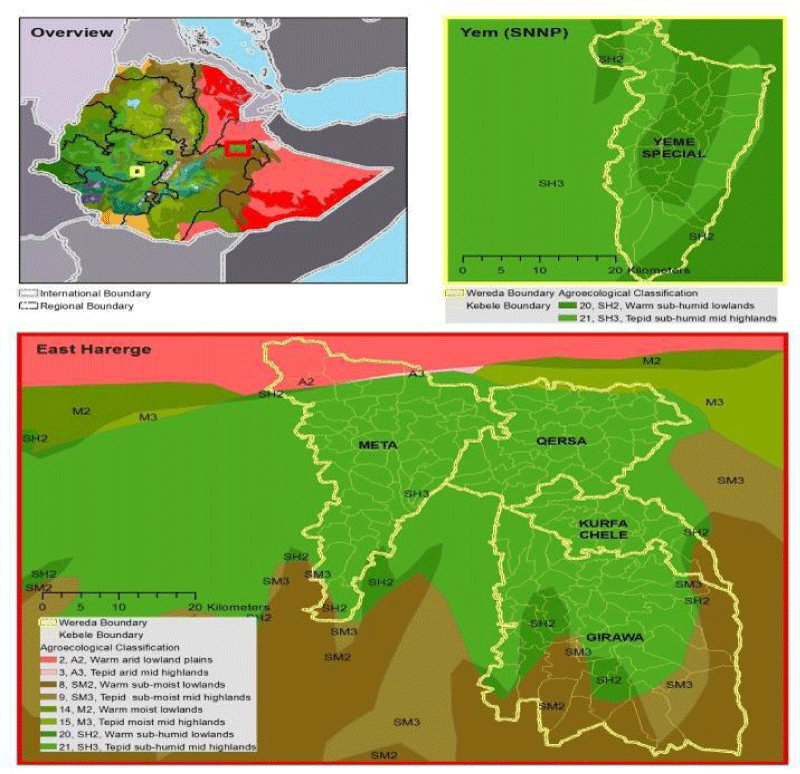
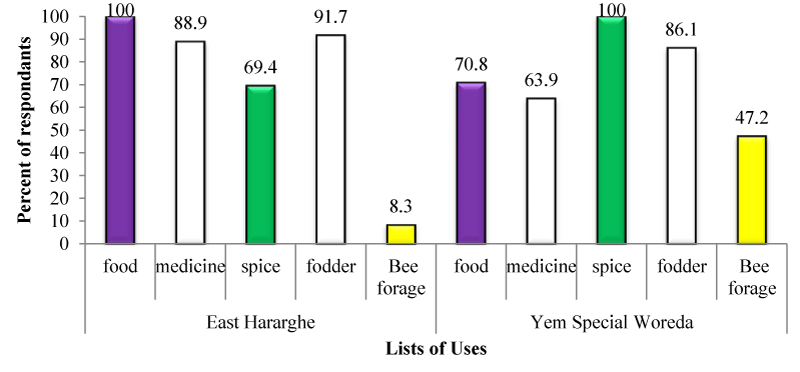

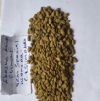


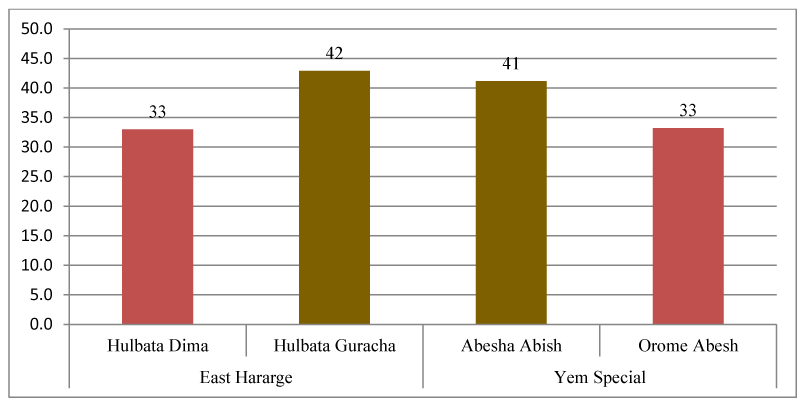
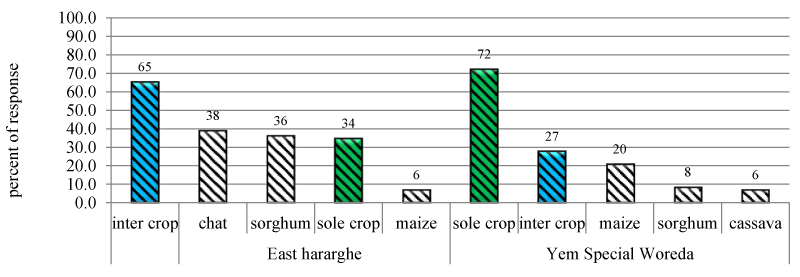
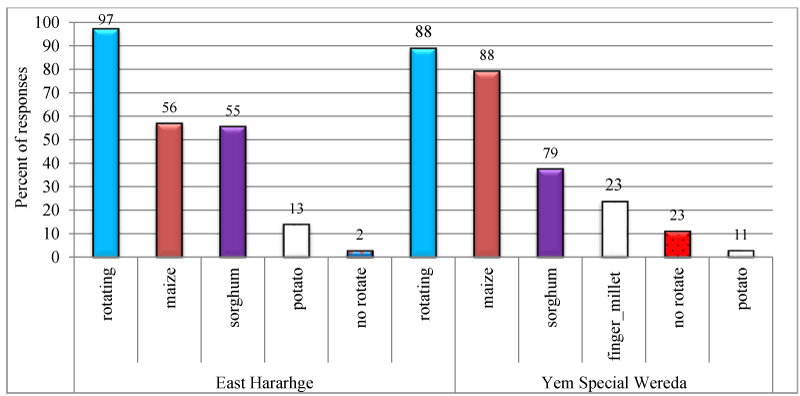

 Save to Mendeley
Save to Mendeley
